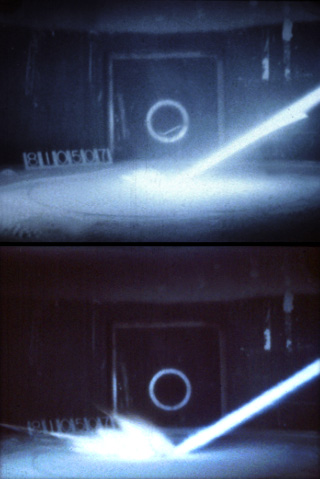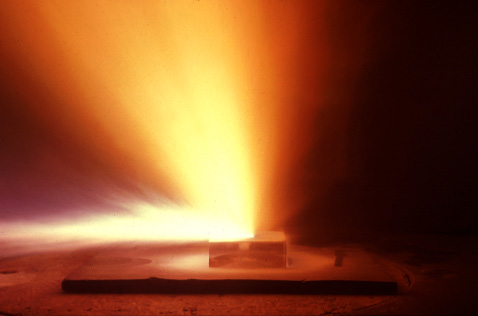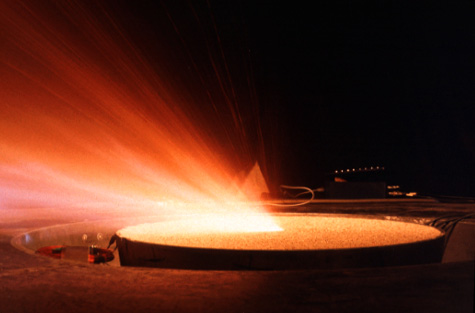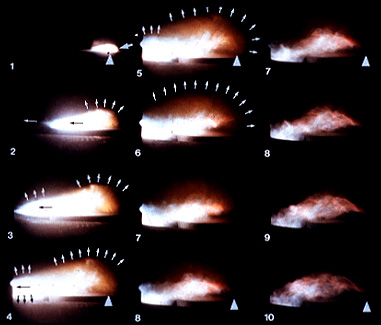


Figure 1. This high-speed sequence shows an object striking a surface at an oblique angle, sending vapor and material downrange. Scientists say the asteroid that wiped out the dinosaurs 65-million-years ago hit the Yucatan from the southeast at a similar angle, propelling vaporized rock and other material into North America and eventually worldwide.
Return to news release 96-041.

Figure 2. High-speed film captures the ballistic vapor and material that are directed downrange immediately after an oblique impact. The impact's vapor component expands upward, outward and downward.
Return to news release 96-041.

Figure 3. Scientists say that immediately after an asteroid struck the Yucatan peninsula from the southeast at a 20- to 30-degree angle 65 million years ago, an expanding hot vapor and melting phase would have rapidly overridden and engulfed the atmosphere within a corridor that widened northward over west-central North America.
Return to news release 96-041.

Figure 4. This high-speed sequence shows the evolution of an impact-generated vapor cloud by oblique impact (15 degrees) into powdered dolomite at 5.2 kilometers a second. The sequence reveals three components of vapor cloud, including a downrange ballistic vapor component that expands upward, outward and downward. This sequence was created using a high-powered vertical gun at NASA's Ames Research Center in Mountain View, Calif.
Return to news release 96-041.